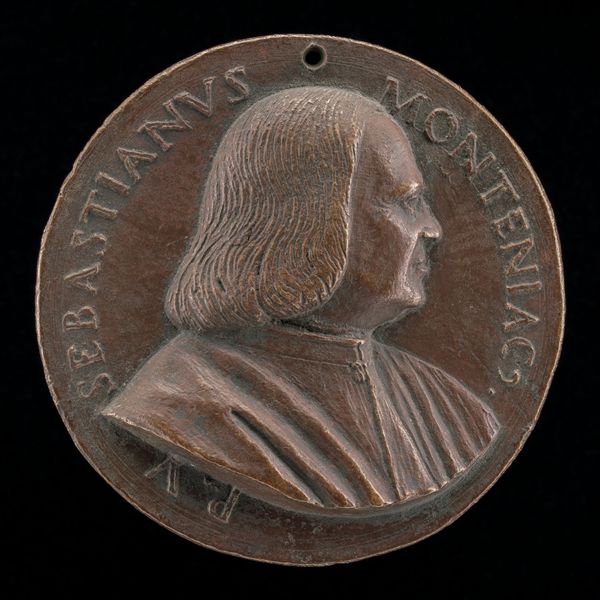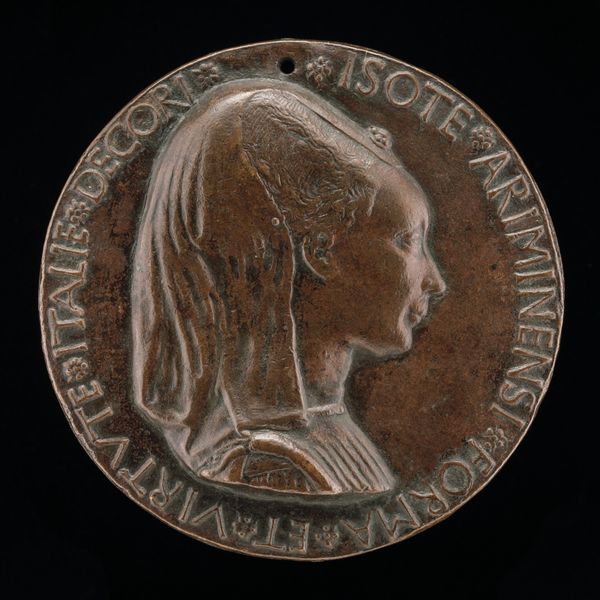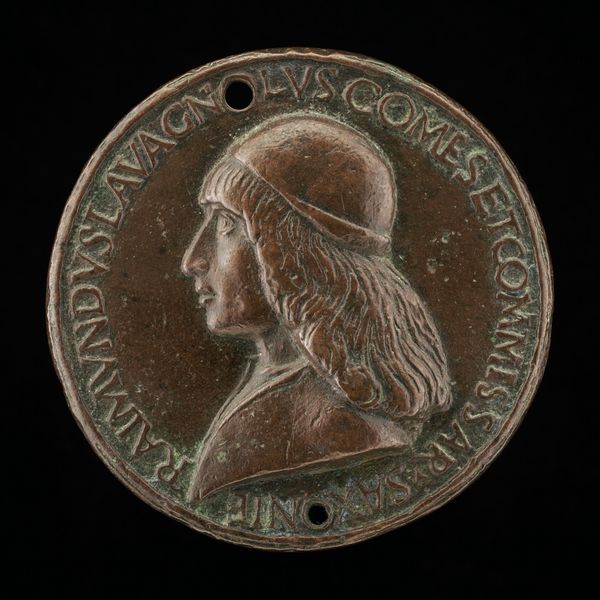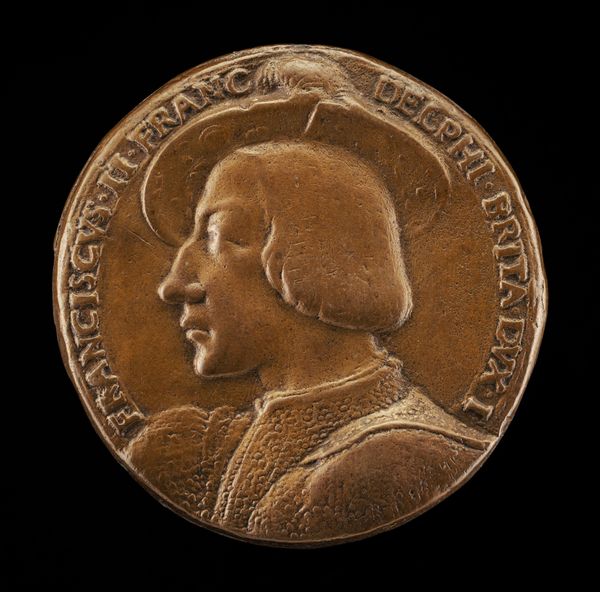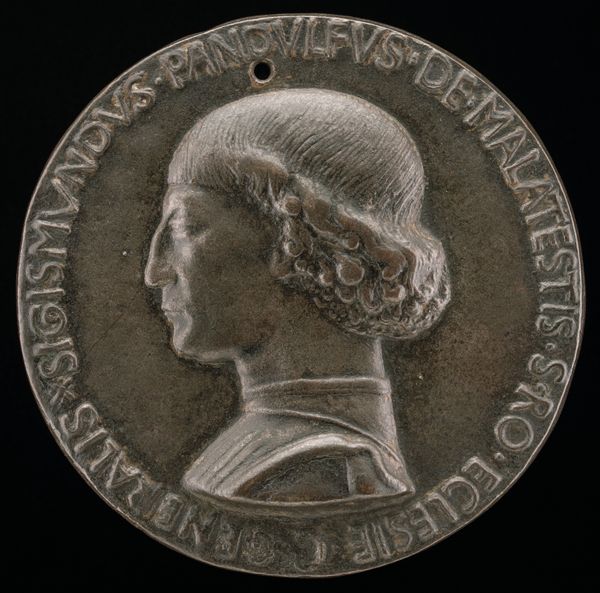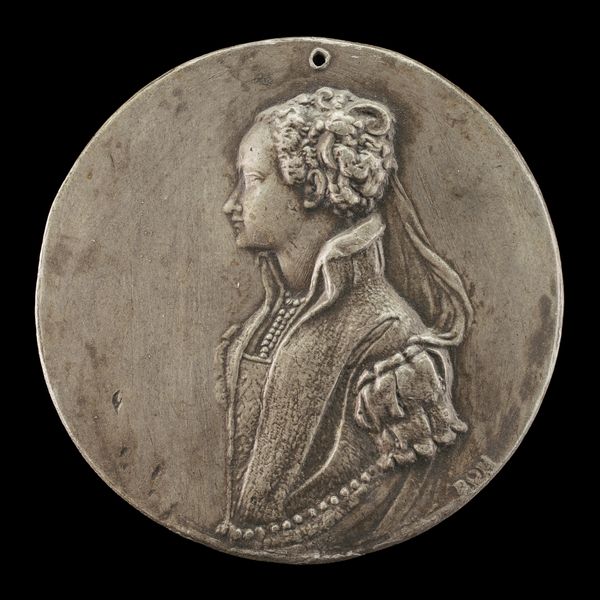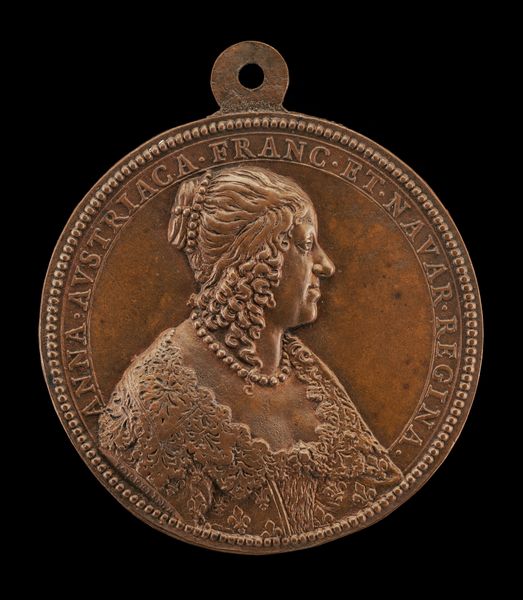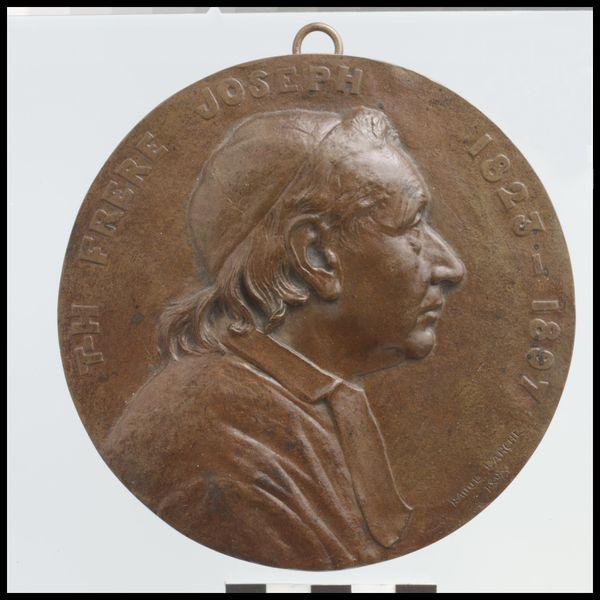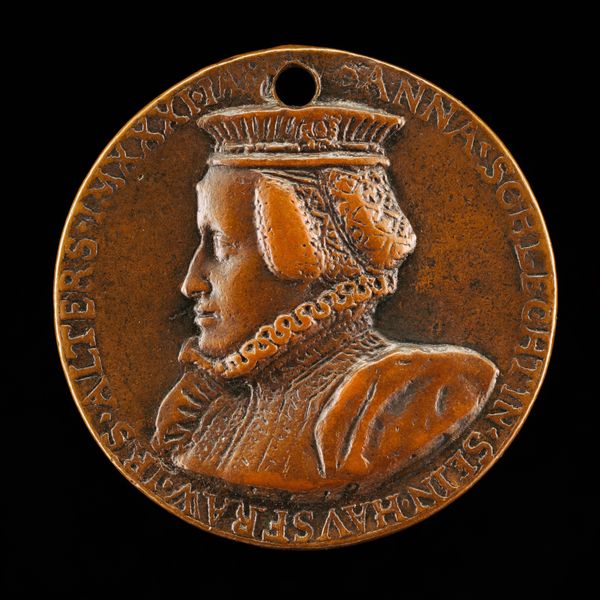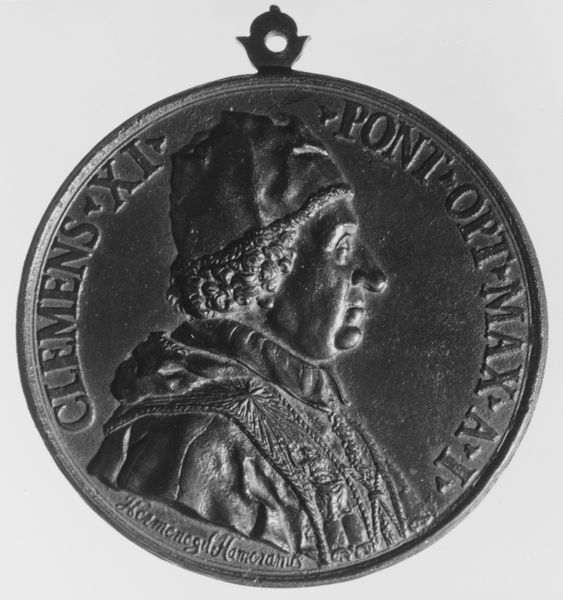![Vincenzo Malipiero, Venetian Patrician, Brother of Francesco [obverse] by Maffeo Olivieri](/_next/image?url=https%3A%2F%2Fd2w8kbdekdi1gv.cloudfront.net%2FeyJidWNrZXQiOiAiYXJ0ZXJhLWltYWdlcy1idWNrZXQiLCAia2V5IjogImFydHdvcmtzLzI4NjNiYjg2LWExZTItNDg4Zi05MDk1LWY3NzY2MWQxOGIwOS8yODYzYmI4Ni1hMWUyLTQ4OGYtOTA5NS1mNzc2NjFkMThiMDlfZnVsbC5qcGciLCAiZWRpdHMiOiB7InJlc2l6ZSI6IHsid2lkdGgiOiAxOTIwLCAiaGVpZ2h0IjogMTkyMCwgImZpdCI6ICJpbnNpZGUifX19&w=3840&q=75)
Vincenzo Malipiero, Venetian Patrician, Brother of Francesco [obverse] 1523
0:00
0:00
bronze, sculpture
#
portrait
#
medal
#
sculpture
#
bronze
#
sculpture
#
italian-renaissance
Dimensions: overall (diameter): 6.36 cm (2 1/2 in.) gross weight: 78.98 gr (0.174 lb.) axis: 6:00
Copyright: National Gallery of Art: CC0 1.0
Curator: Here we have a bronze portrait medal of Vincenzo Malipiero, a Venetian Patrician, and brother of Francesco. It was crafted by Maffeo Olivieri in 1523. Editor: It strikes me as very self-contained, almost stoic. The circular form emphasizes the isolation of the figure, doesn’t it? The muted bronze color lends it an antique, enduring quality, too, as if pulled from the depths of history. Curator: Indeed, the circular format, echoing ancient coins, lends authority and timelessness. The inscription around the portrait not only names him, but fixes his identity in relation to his lineage; his importance to the history and continuation of Venice itself. The inclusion of familial relationship would suggest more than just individualism at play here. Editor: It's fascinating how Renaissance portraiture, even in miniature like this, served as a form of propaganda, asserting social standing and solidifying dynastic power. There's something inherently political about these object's function. I imagine it circulated amongst a small and select group. Curator: Precisely, medals like these acted as a Renaissance version of trading cards—objects that commemorated, yes, but also signaled political alliance and patronage. Olivieri himself operated within circles of considerable influence. Each element in a work, from the font of the lettering, to the patina, the style of dress, all contributed toward conveying a certain pre-ordained idea of the family in question. Editor: And the profile view, a classicizing nod to Roman emperors, reinforces that sense of established power. We’re meant to understand that Vincenzo, as an individual, participates within a very long tradition. The way the bronze casts light almost sculpts the form to give it the look of an aged Roman emperor! Curator: It reminds me of what Aby Warburg said about images after antiquity always carrying something of their ancient lineage with them, their cultural DNA constantly being reactivated with each new generation's aesthetic tastes, biases, and beliefs. Symbols endure even as cultures change. Editor: Absolutely. Thinking about how this object may have been perceived versus how we interpret it now is key to understanding its cultural weight and that interplay between past and present. It provokes questions about how we visualize power and legacy in our own time. Curator: Yes, and how objects such as this—small in scale but potent in symbolic resonance—continue to echo through history, quietly shaping our understanding of cultural continuity. Editor: It shows how, even today, objects like these quietly exert power in subtle but meaningful ways, continually shaping and re-shaping how we imagine history.
Comments
No comments
Be the first to comment and join the conversation on the ultimate creative platform.
